A reader asked me to test the high shutter speed bokeh of the Hasselblad XCD 90V on the X2D. I made the tests with my recently acquired production version of the lens. For a source, I used an LED flashlight with a 15 or 20 mm aperture at a distance of about 10 meters. That’s not quite a point source, but it’s the best I can do where I am. I set the lens wide open and focused at the minimum focusing distance.
Here’s a full frame shot:
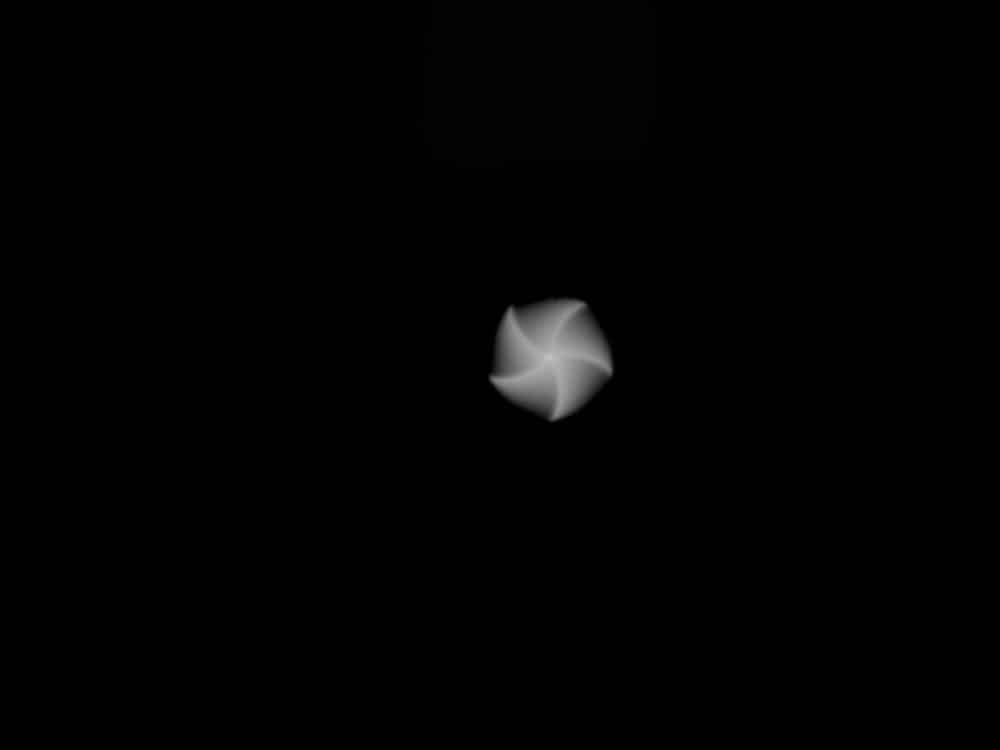
Here are some crops:
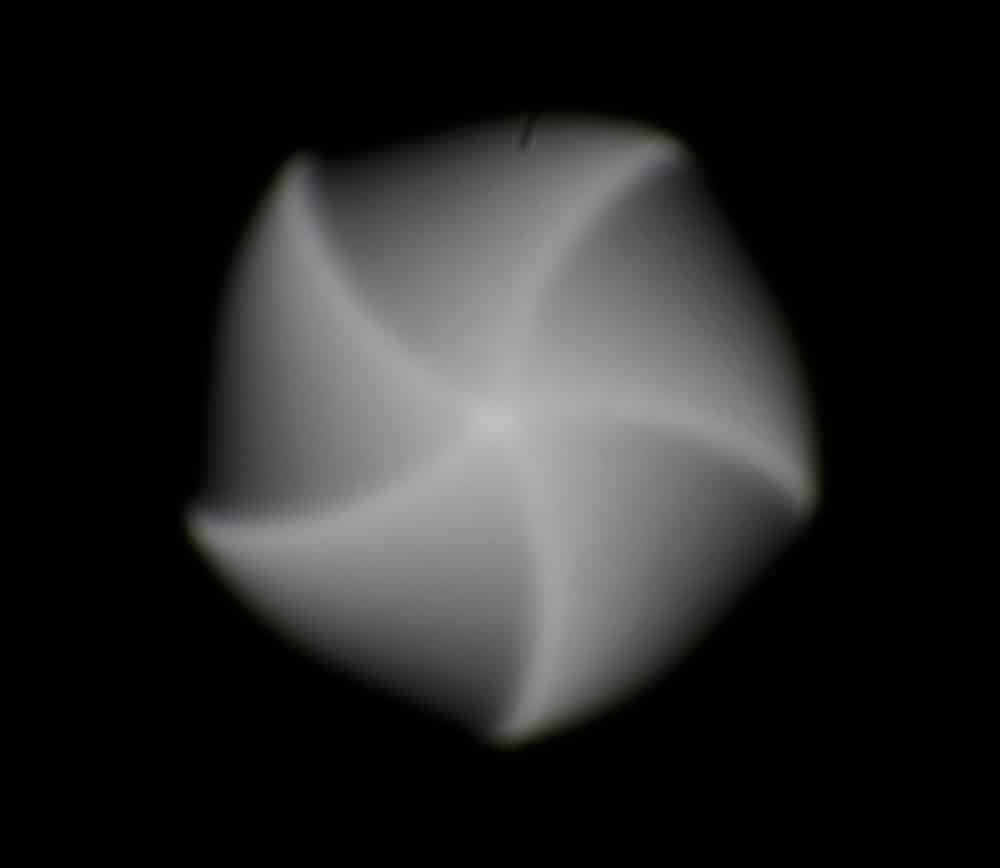
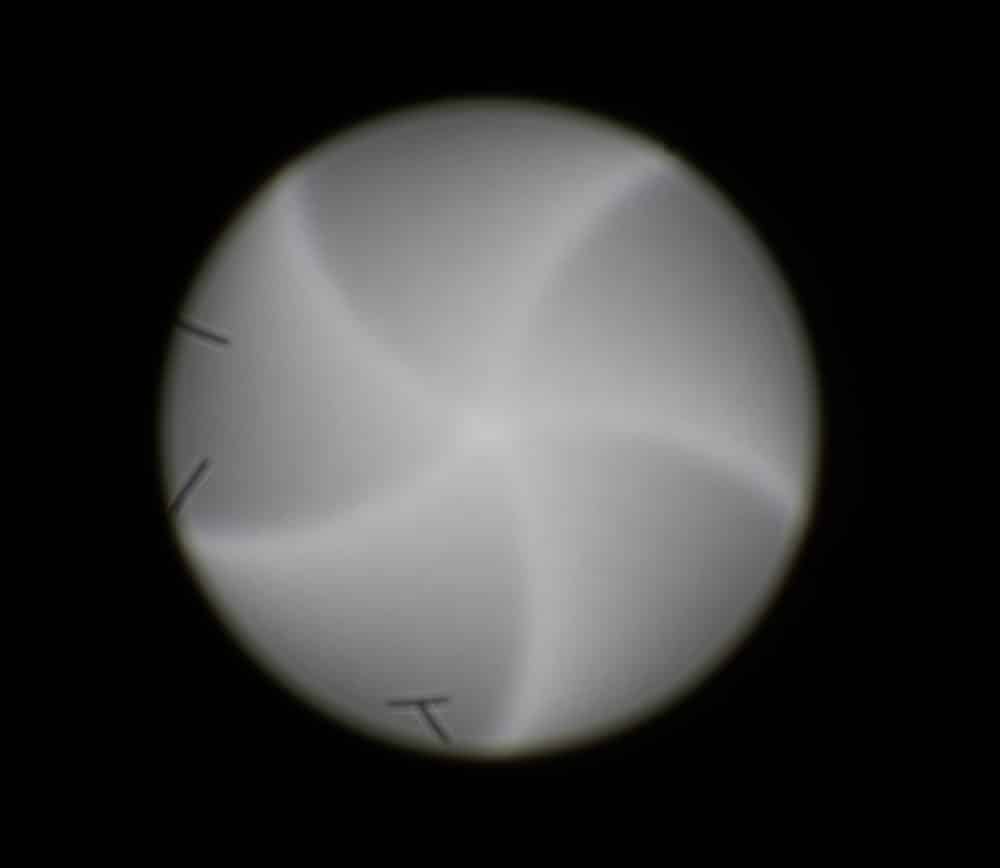
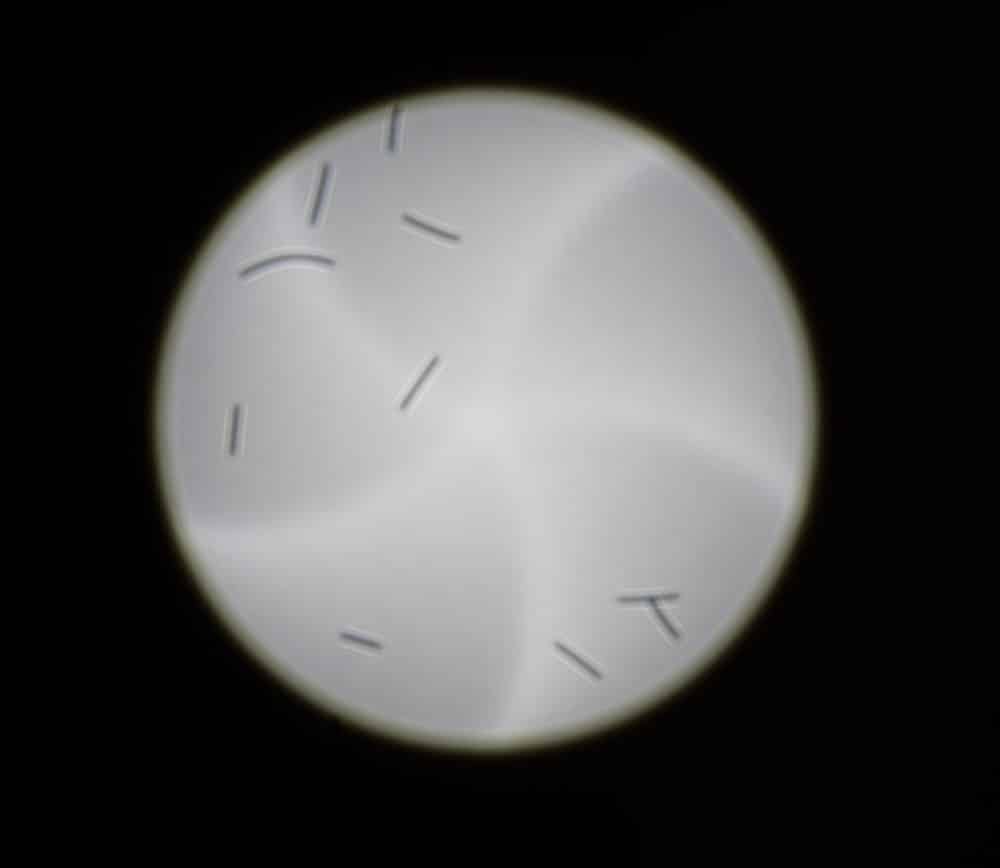
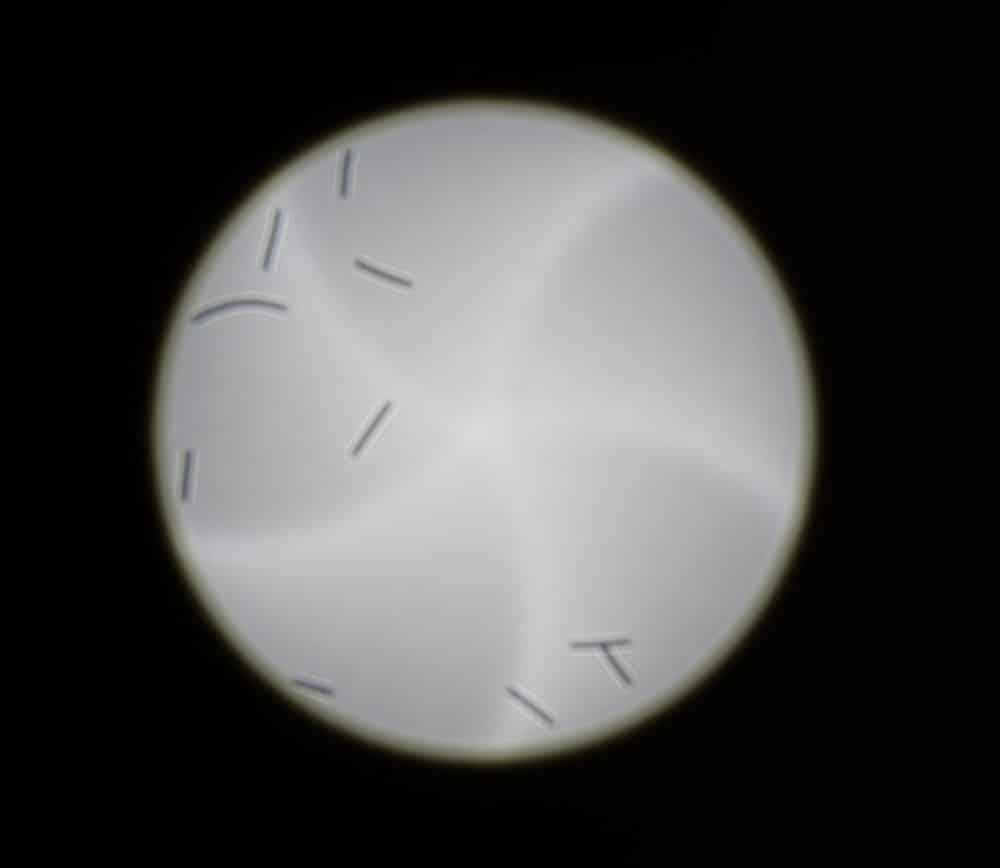
As you can see, the bokeh is anything but the classical flat disk. You can see an image of the shutter blades that gradually fades as the shutter speed goes down. But what are those black worms? They don’t appear on normal shots with this lens and camera. And they move with the flashlight, not appearing in the same place on the sensor.
Here’s another shot at 1/500, with the flashlight placed at a slightly different space in the frame:
Compare that to the shot above.
I’d appreciate any cogent thoughts on the source of the “worms”.
In the upper right corner:
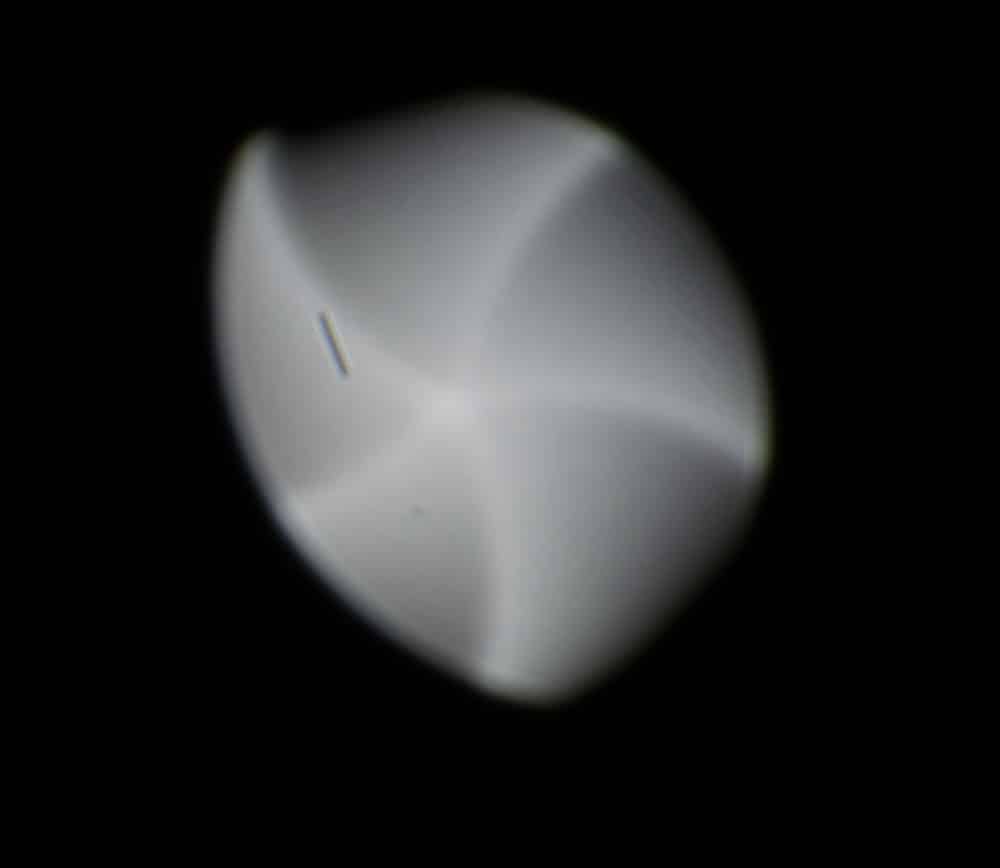
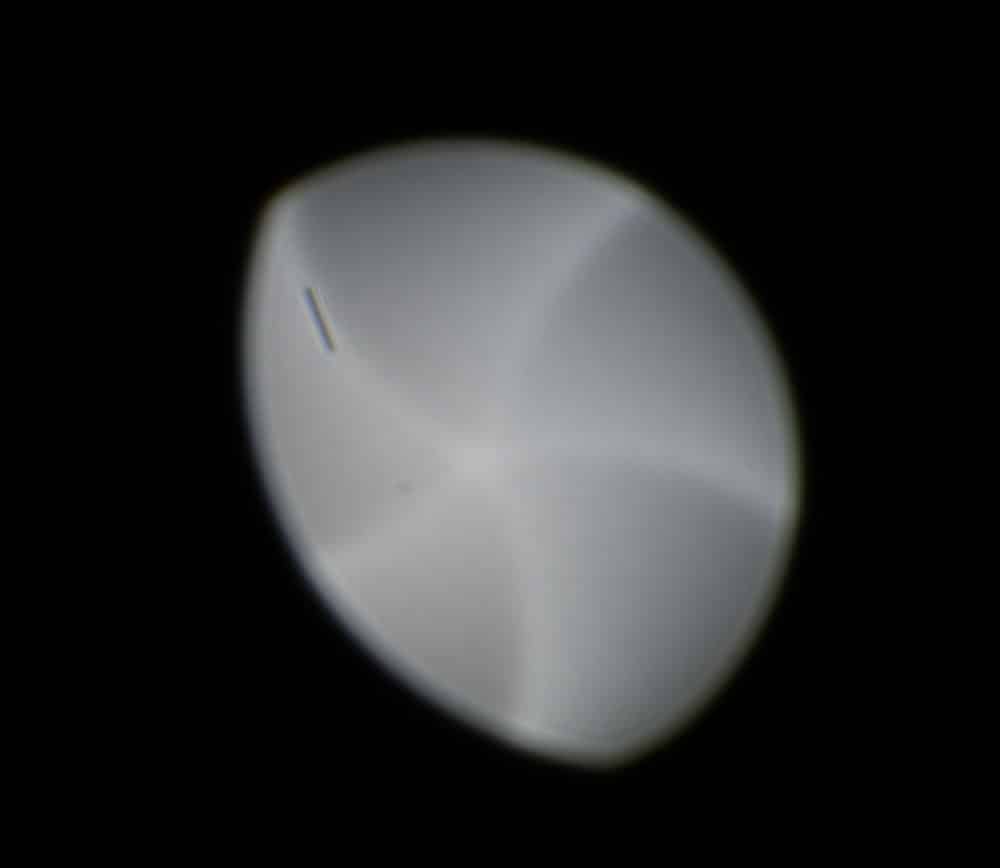
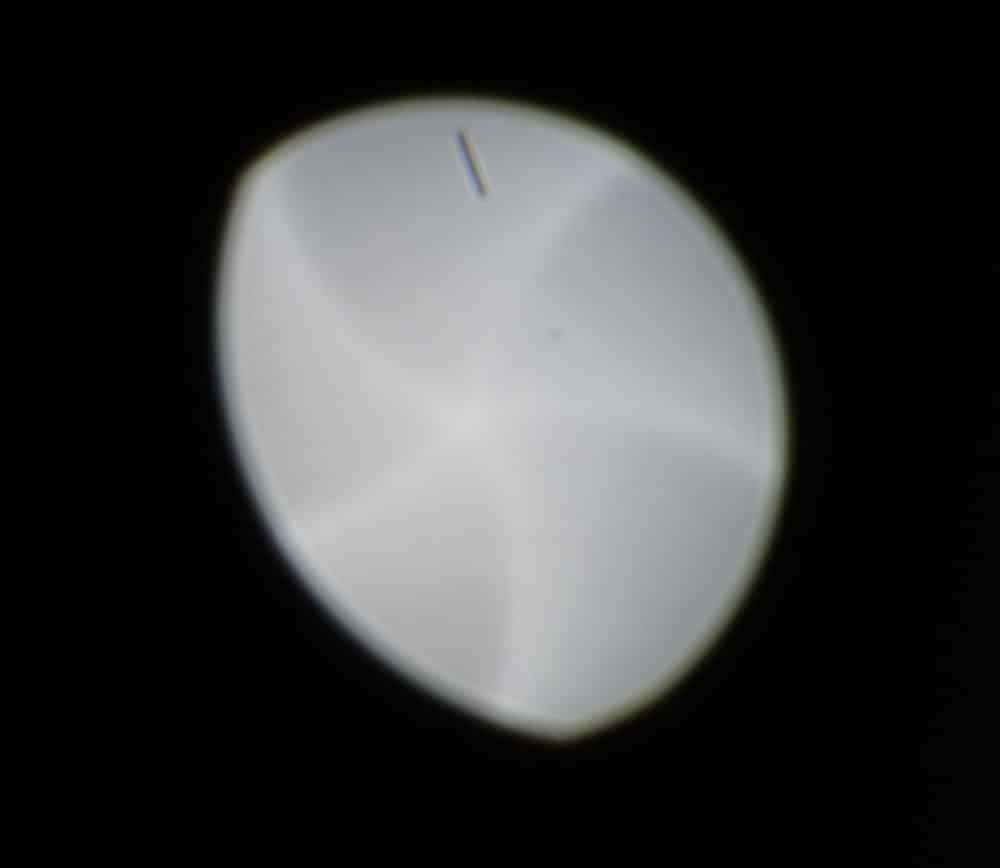
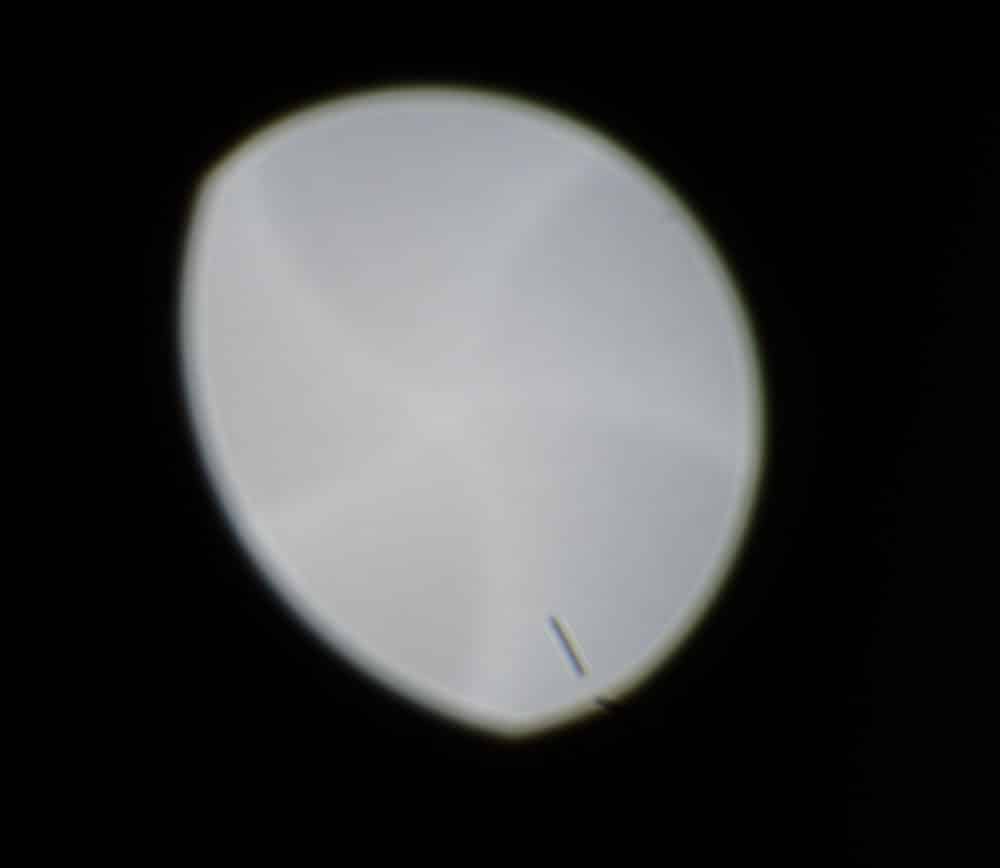
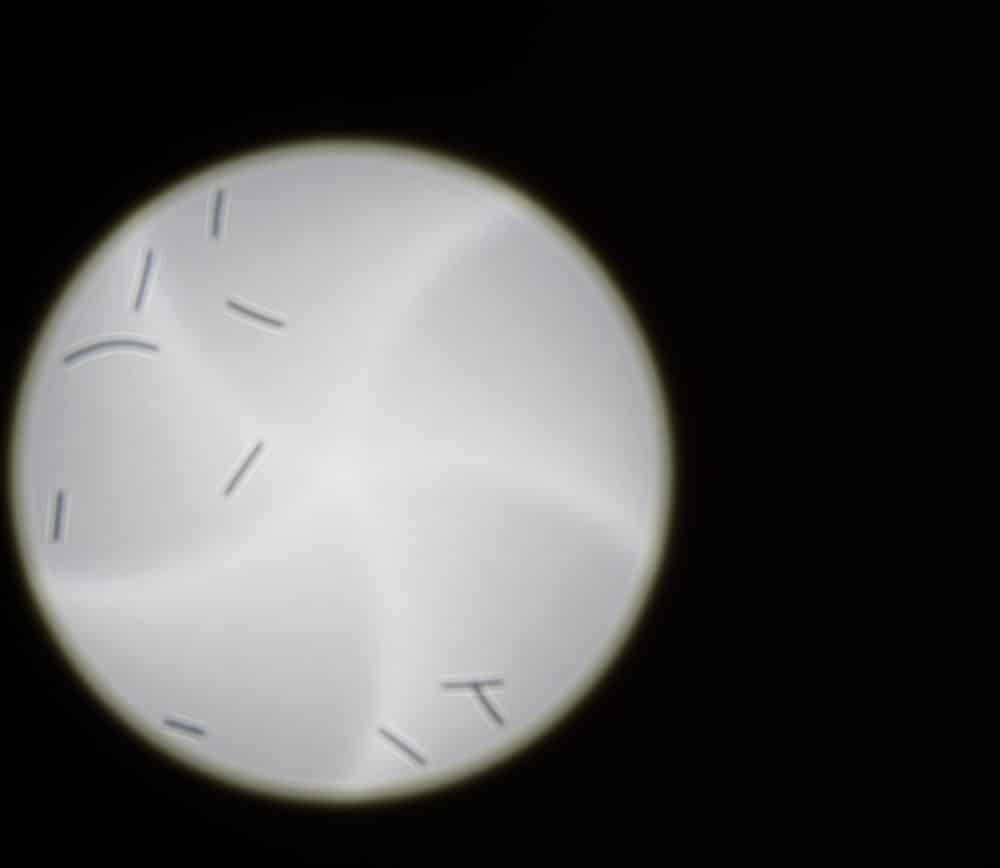
Tony says
I’m going to guess that the worms are shadows of airborne particles of some kind. They are reminiscent of the perfectly sharp (except for diffraction) shadows of nearer pine needles when I have an image with bokeh balls of the Christmas tree lights on the far side of the tree. The dust motes themselves aren’t in focus; the worms are missing patches in the wavefront, like the animal shadows we made on walls in our childhoods.
CarVac says
It could be contamination inside the flashlight optics.
Same principle as this: https://en.wikipedia.org/wiki/Bokode